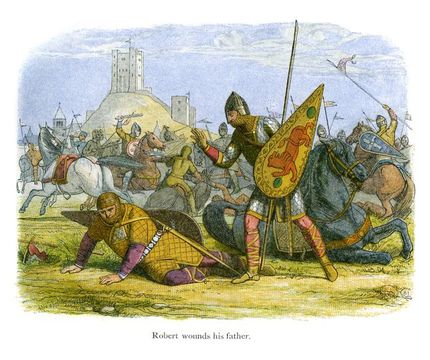
Britain has been no stranger to bloody conflict throughout its history. The fields where war was waged are historic and poignant.
Today, it's hard to imagine that these green and tranquil landscapes were once scenes of some of the bloodiest battles to ever be fought in Britain, fields where tens of thousands of men perished.
Time has healed the scars and swallowed up the blood, returning the land to its tranquil state. But historians have not forgotten what happened on these hallowed grounds, preserving and presenting them for this and future generations.
Here, then, are five of the most historic British battlegrounds you can visit on your next trip.
1066 And All That • Hastings • East Sussex, 1066
Every English child leaves school with one particular date ingrained in their memory: 1066, the Battle of Hastings, the most famous date in British history.
The last successful invasion of these islands, the battle saw Duke William of Normandy defeat Harold, the last Anglo-Saxon King, and go on to claim the throne of England. In doing so, the French Duke became known to the ages as William the Conqueror. It was a considerable improvement on his previous nickname: William the Bastard.
Hastings has been a place of pilgrimage ever since Harold got an arrow in his eye. King William built an abbey at the top of Senlac Hill, the prominent rise that the Saxons failed to defend, with the high altar supposedly sited on the exact spot where Harold died. Battle Abbey did not survive intact, but the ruins, under the control of English Heritage, are a haunting place to visit. Your first stop should be the informative visitor center.
Afterward, you can walk the battlefield itself with a recorded audio guide that will bring the 1,000-year-old conflict back to life. If the weather turns foul, find cover under a covered terrace.
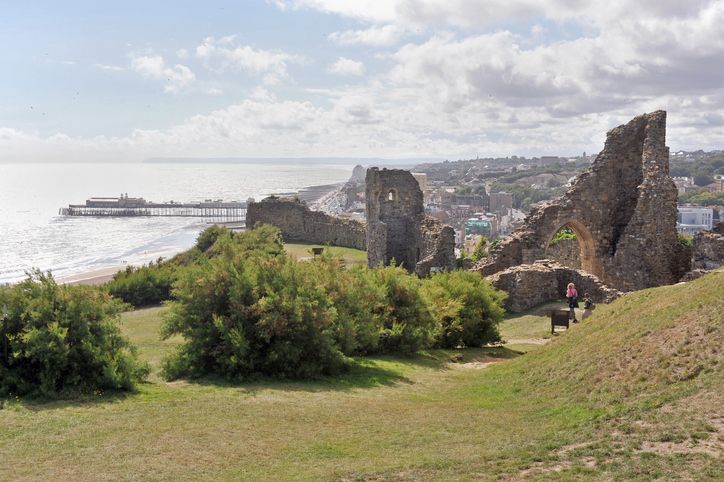
Hastings Castle ruins which date from the Norman invasion of 1066 AD
Flower of Scotland • Bannockburn • Stirling, 1314
As with many ancient battlefields, there is not a lot left to see at Bannockburn, where a decisive fight for Scottish independence took place over two days in June 1314.
However, the National Trust for Scotland has built a radical new visitor experience just outside Stirling, on the very spot where Robert the Bruce planted his standard and gathered his army before taking on the might of King Edward II and defeating an army nearly twice the size of his.
The Battle of Bannockburn Center may not look like much from the outside—a brick building surrounded by houses beside the main road into the town—but once inside, you'll find impressive 3-D graphics and visual effects bringing the battle to life from both the Scottish and English points of view.
The culmination of each visit is the Battle Room, where budding Scots heroes and English conquerors have the chance to rerun the violent battle, which is commemorated in the unofficial Scottish anthem, “Flower of Scotland.” There's no bloodshed here though—the reenactment takes the form of a computerized game.
The flashy audiovisual show and computer gaming won't be to everybody's taste; traditionalists might prefer to wander the nearby parkland and view the bronze statue of the Bruce. However, the center is certainly proving popular so far—be sure to book your tickets online beforehand; otherwise, you may face a long wait to enter the 3-D experience.
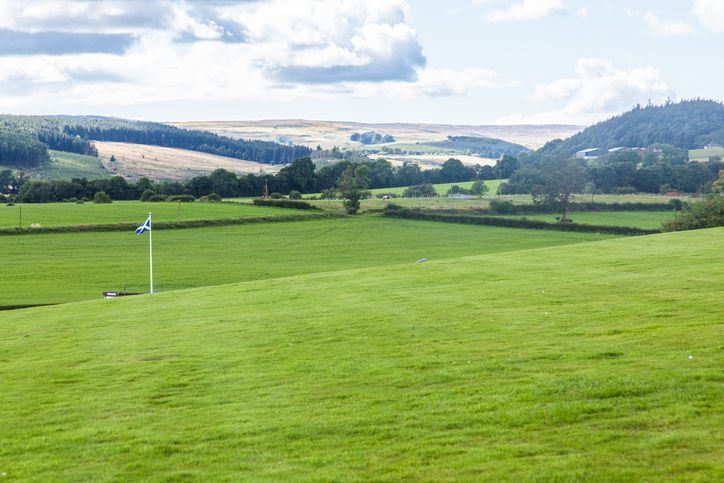
The Battle of Bannockburn batllefield near Stirling
The Bloody Meadow Towton • North Yorkshire, 1461
If the 15th century was England's grimmest period, dominated by the decades-long Wars of the Roses, then Towton was its bleakest. On Palm Sunday, March 29, 1461, the soldiers of two rival armies, each numbering around 30,000, gathered on a vast meadow.
There they slogged it out in the bloodiest battle fought on British soil—nearly half the soldiers were killed. In the village of Towton, so many fleeing Lancastrians were killed that the bodies formed a bridge across the water of Cock Beck.
For such a monumental encounter—it resulted in the crowning of new King, Edward IV, Towton flies under the radar in comparison to some of the other battlefields in this list. There is no grand visitor center, only a small exhibition on the grounds of the Crooked Billet pub. You'll probably have to ask behind the bar to gain access, but stopping in for a quick pint should prove no chore!
The lack of a visitor center matters little because the Towton battlefield is best explored on foot, although hopefully in better weather than the snow with which the medieval soldiers had to cope.
Many of the Victorian era's agricultural enclosures have been removed in recent years, returning the landscape to how it would have looked to the future Edward III and Warwick the Kingmaker on that fateful day. There's a clearly marked trail around much of the battlefield with boards explaining what happened where.
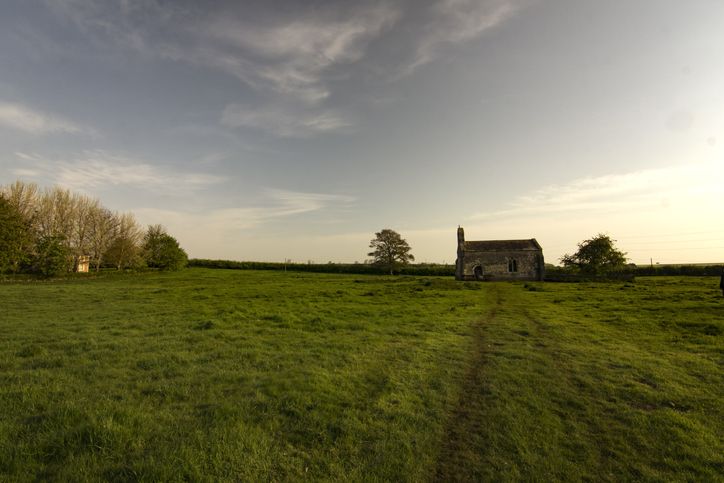
Towton
Bosworth • Leicestershire, 1485
In 2005, Leicestershire County Council celebrated being awarded a grant of money to help revamp the Bosworth Battlefield Heritage Centre. Four years later, new research emerged that left the councilors with red faces—it turned out that the visitor center was actually in the wrong place, and the true site of the Battle of Bosworth was a mile to the southwest!
Despite the mistake, Bosworth's primary attraction is still worth a visit. It tells the story of how the Wars of the Roses were eventually brought to a close from the point of view of four characters involved in the battle: a local child, the wife of a mercenary soldier, a farmer long-bowman and the enigmatic Lord Stanley.
Together they reveal how Henry Tudor won an unlikely victory and how Richard III suffered a bloody death. With the exhibition fresh in your mind, follow the walking trail leading from the center to the actual field where the Tudor dynasty began.
It wasn't just the Bosworth battlefield that was lost; so was its defeated victim, Richard III, whose body also disappeared into the mists of time only to be famously rediscovered under a car park in 2012. The deposed King's burial site is in Leicester Cathedral, about half an hour away, as is the Richard III Visitor Center.
Battling on the Border Flodden • Northumberland, 1513
Despite being married to Henry VIII's sister, James IV of Scotland was happy to raid over the border into northern England, hoping to prove a distraction from the Tudor monarch's campaigns in France.
However, James did not consider the threat of the Earl of Surrey, who had been left to defend England. The two armies clashed at Branxton Hill, less than five miles from the modern border.
Despite holding the defensible higher ground, the Scots charged the English lines and were routed; among the dead were nine earls, 13 barons, three bishops, two abbots and James IV himself—the last British monarch to die in battle. James's 1-year-old son succeeded him, negating the threat to the English throne for a few years.
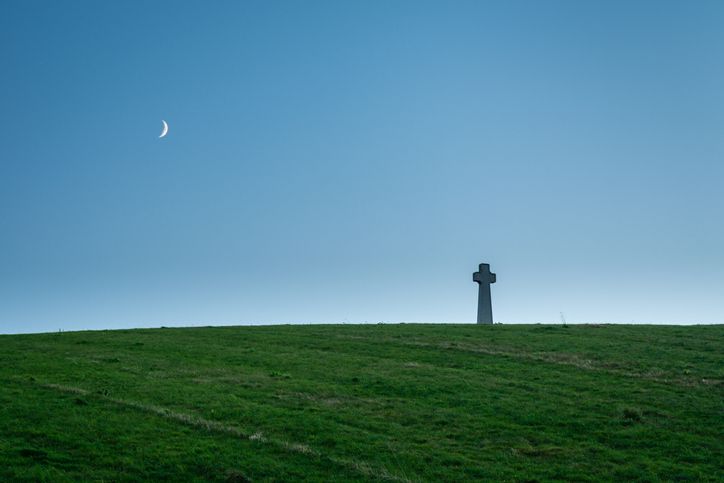
In 1513 next to Branxton Village the Battle of Flodden Field took place. The cross is a Monument on Pipers Hill
* Originally published in Feb 2018.





Comments